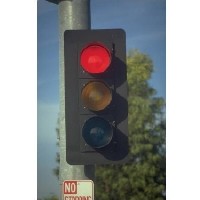
There has been a great deal of work in the computer vision literature investigating what can and cannot be computed from certain sets of “feature point coorespondences.” Another potentially limiting factor on computer vision algorithms is photometrics; the intensity values recorded by real cameras. For example, pixel intensity noise can impose limits on what can be computed. We are investigating some of the limits that are imposed on computer vision algorithms by imperfect or incomplete photometric information. In particular, we are investigating the limits of super-resolution and stereo.
Super-Resolution
We have analyzed the super-resolution reconstruction constrants and derived a sequence of results which all show that the constraints provide less and less useful information as the magnification factor increases. Although smoothness priors can help regularize the problem, we have shown that they cannot compensate fully for the lack of information in the discretized photometric signal.
Stereo
When is stereo unique and when is it inherently ambiguous? We have investigated this question and derived a concise characterization of when the stereo problem (given the entire light-field) has a unique solution and when there are multiple scenes that could have generated the same set of photometric measurements (the light-field.)
